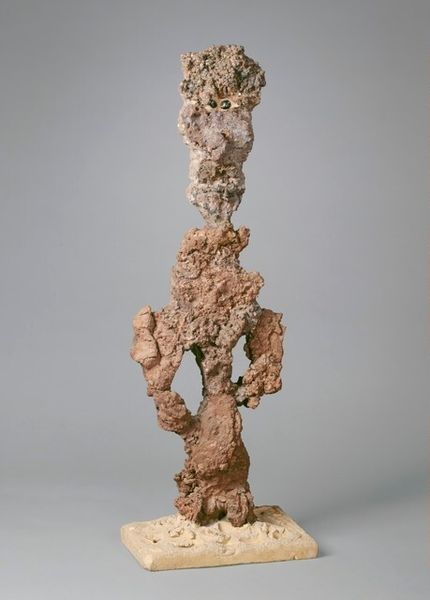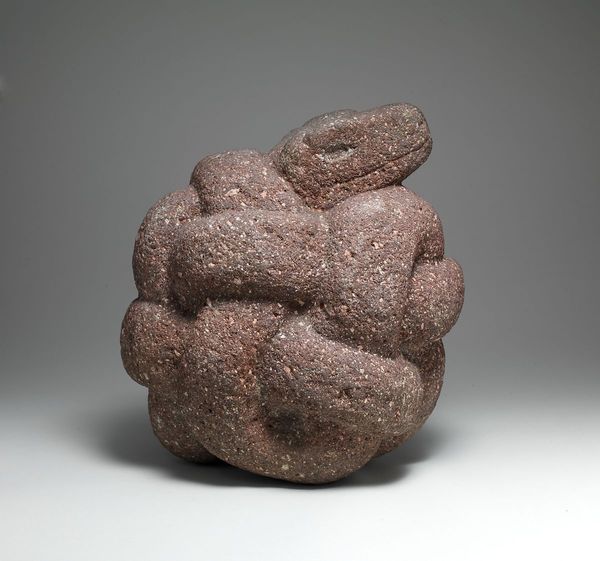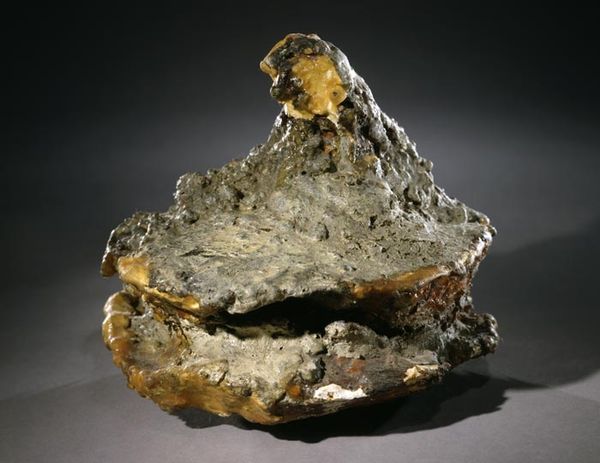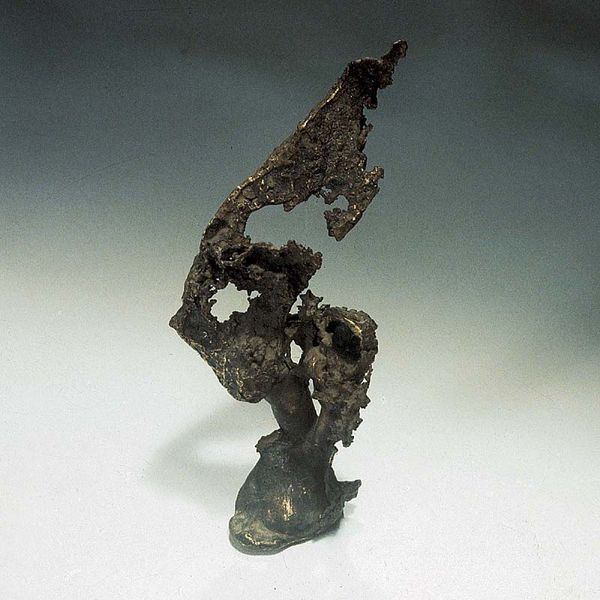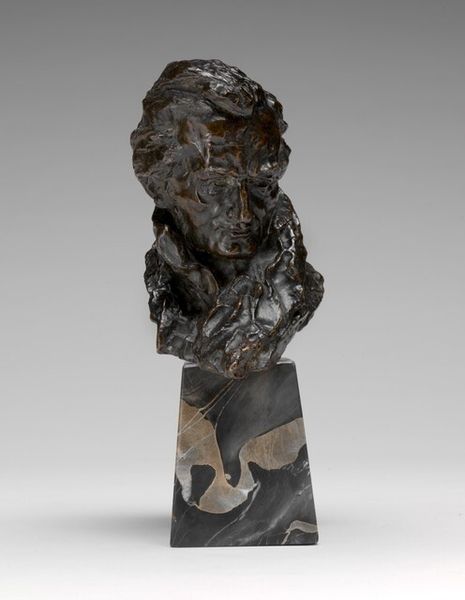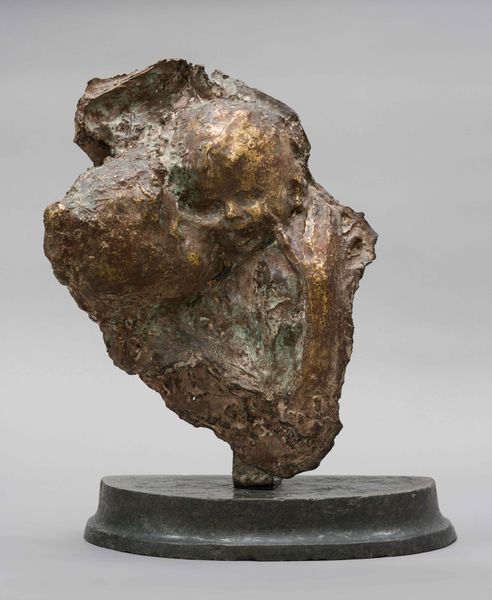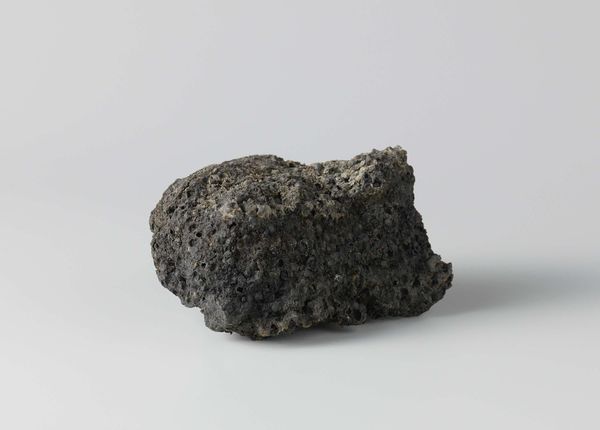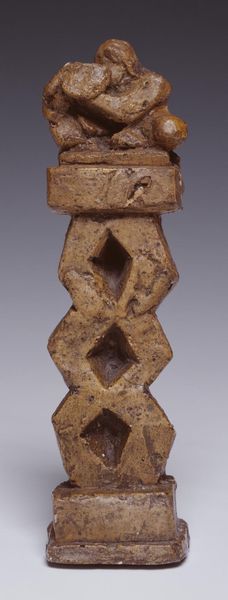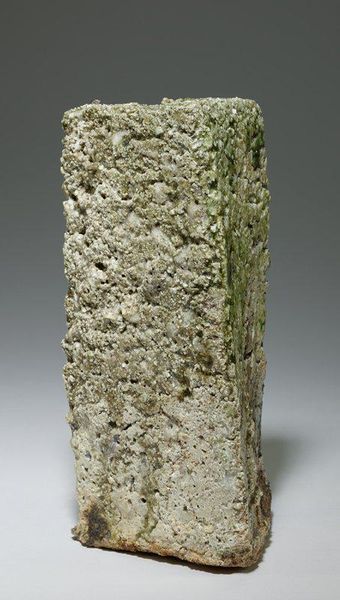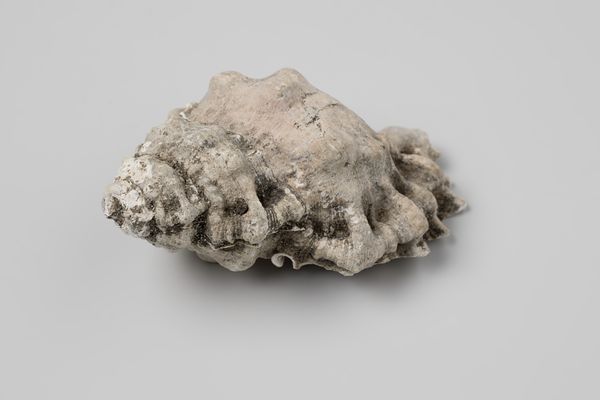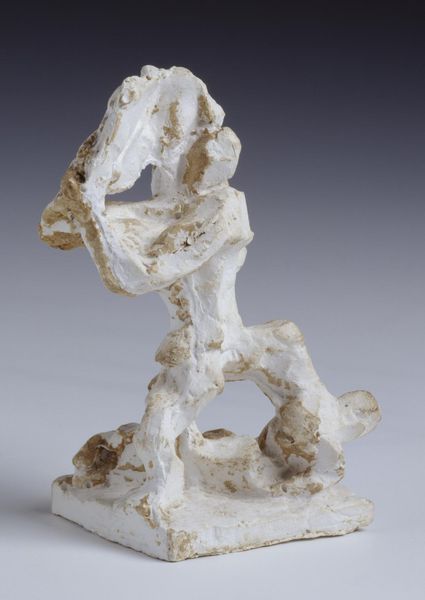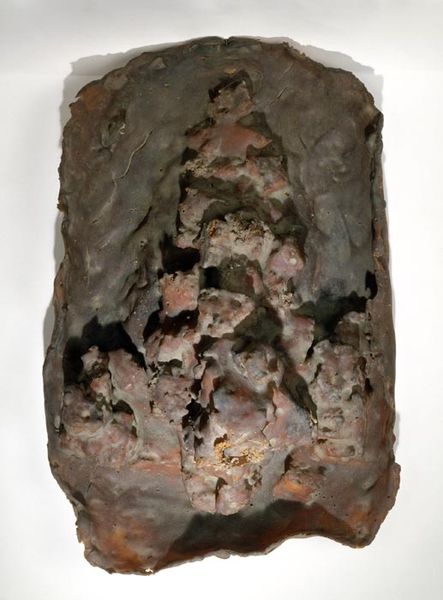
mixed-media, assemblage, sculpture
abstract-expressionism
mixed-media
organic
non-objective-art
assemblage
sculpture
sculpture
abstraction
Dimensions: overall: 41 x 23.2 x 13.3 cm (16 1/8 x 9 1/8 x 5 1/4 in.)
Copyright: National Gallery of Art: CC0 1.0
Curator: Let's turn our attention to Jean Dubuffet’s intriguing 1954 sculpture, “L'amphigourique,” an assemblage of mixed media that challenges our very notion of artistic form. What strikes you first? Editor: It's remarkably geological—like a miniature monument eroded by time, evoking notions of prehistory or even planetary landscapes. I find myself considering questions of deep time. Curator: It is a far cry from classical sculpture, indeed. This work represents Dubuffet’s commitment to raw, unconventional materials. He sought to capture the unmediated expression of the everyday, particularly from sources considered outside of traditional artistic circles, such as the art of children or the mentally ill. What does this impulse represent to you? Editor: The materials, of course, suggest so much! This use of found, perhaps discarded materials, subverts the traditional art world's emphasis on pristine craftsmanship, speaking directly to class and labor—who is expected to work with "dirty" materials, and who gets to appreciate art made with precious ones? I can see a conversation here around value systems and social hierarchy. Curator: Exactly. It rejects conventional notions of beauty in favour of something rawer, something visceral. This focus on materials considered “low” in art connects directly to broader postwar critiques of bourgeois values. Editor: Dubuffet seems engaged in an implicit dialogue with the avant-garde movements that came before, especially Dada and Surrealism. However, the way he translates this anti-aesthetic sensibility into something almost geological creates new intersections between postwar anxiety, identity, and geological materiality. Curator: Yes, he deliberately chose those kinds of non-art materials for that purpose, creating almost a defiant act, which, looking at it now from a distance, gives this sculpture incredible energy, in my view. Editor: It’s like Dubuffet demands we redefine beauty and art through the lens of discarded elements and a material process seemingly stripped of overt aesthetic polish. Food for thought, especially as we consider contemporary anxieties around ecological crisis and waste. Curator: It certainly does invite ongoing examination of our relationship to materiality and art. Editor: Yes, indeed. It continues to force me to examine value in unexpected places.
Comments
No comments
Be the first to comment and join the conversation on the ultimate creative platform.
